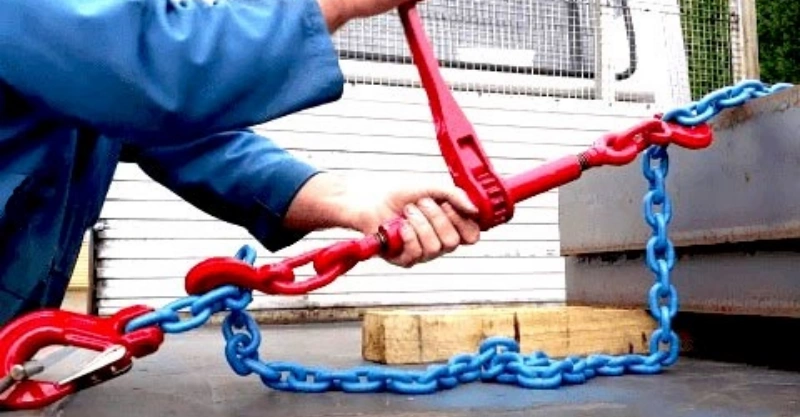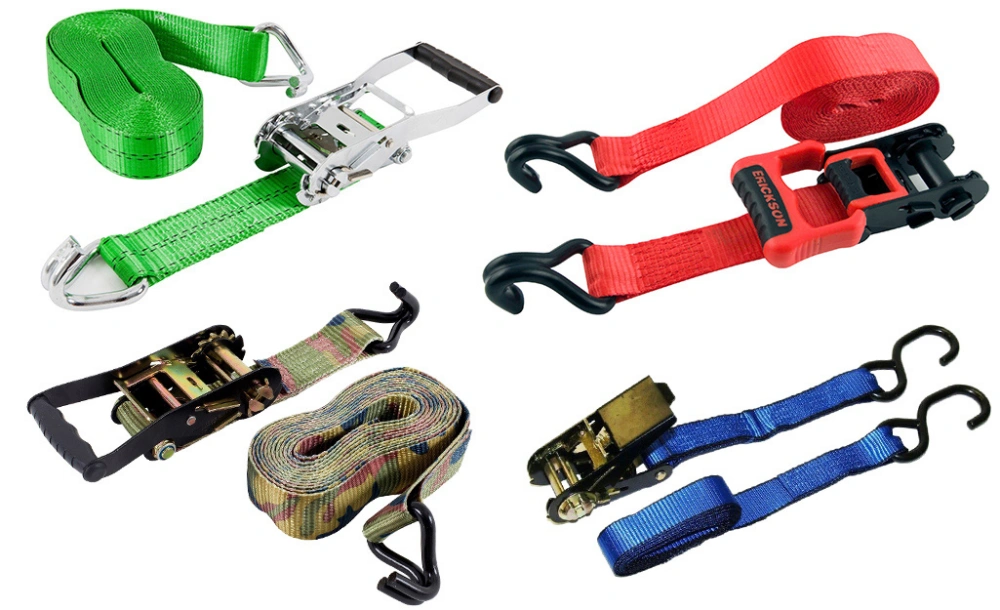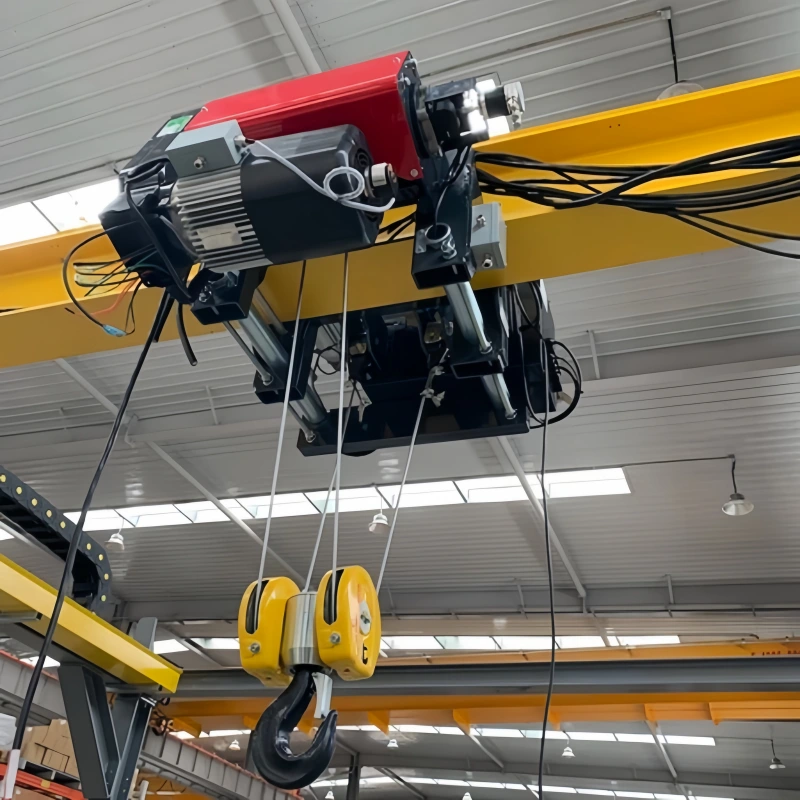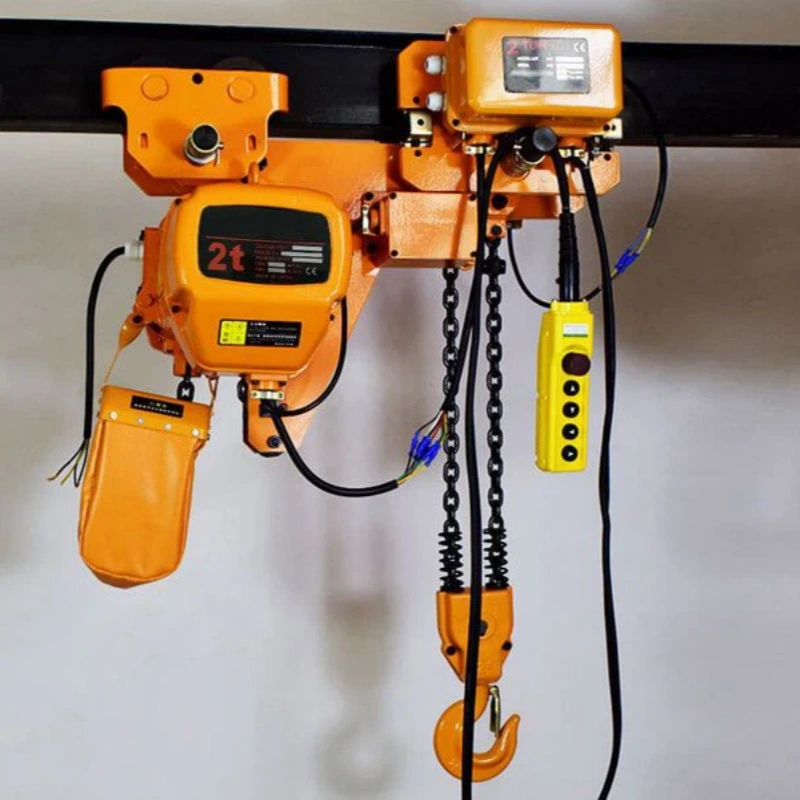If you haul cargo, you probably wonder about the differences between chain binders vs ratchet straps and which works better for your load. The answer depends on what you need to secure. Check out this quick guide:
Load Restraint Solution | Features | Best For |
|---|---|---|
Ratchet Straps | Adjustable, easy to use | General cargo |
Chain Binders | Heavy-duty, secure | Large/bulky items |
Choosing the right gear matters. Strong cargo control keeps your load safe, boosts efficiency, and can save money in the long run. The right choice helps you meet safety standards and avoid costly mistakes. Powerful Machinery brings years of experience and certified solutions, so you can haul with confidence.
The transportation industry keeps growing, so secure cargo solutions matter more than ever.
New materials make straps and binders tougher and more reliable.
Following safety rules means you need high-quality equipment.
Key Takeaways
Choose chain binders for heavy or bulky loads. They provide superior strength and stability for securing large equipment.
Use ratchet straps for general cargo. They are easy to adjust and perfect for lighter items like furniture or recreational gear.
Always check the working load limit before using any tie-down. This ensures safety and compliance with transportation standards.
Consider the ease of use. Ratchet straps are simpler and safer for most users, while lever binders require more strength and caution.
Inspect your equipment regularly. Look for wear and damage to maintain safety and reliability during transport.
Chain Binder Overview
What Is a Chain Binder?
A chain binder is a tool you use to tighten chains and secure heavy cargo on trucks or trailers. You often see these devices on flatbed trailers, holding down large equipment, steel, or lumber. When you use a chain binder, you apply tension to the chain, which keeps your load from shifting during transport.
This step is critical for safety. If your cargo moves, it can cause accidents or damage. Transportation safety authorities say you must pick the right size of chain binder for your job. The working load limit and the type of cargo matter. Using the wrong size can lead to unsafe conditions or even cargo loss.
Chain binders help you meet FMCSA cargo securement standards, so you stay compliant and keep your load stable.
Types of Chain Binders

You have two main types of chain binders to choose from. Each works a bit differently and offers unique benefits.
Type of Binder | Mechanism of Operation | Safety Considerations |
|---|---|---|
Uses a ratcheting mechanism. You turn the handle back and forth to add tension. | Safer to use. Less risk of snapping back. | |
Uses a lever action. You pull the handle to tighten the chain quickly. | Needs more strength. It can be risky if you use a cheater bar. Always use gloves and stand steady. |
Ratchet binders take a little longer, but they are easier on your arms and safer for most people. Lever binders work fast, but you need to be careful when you use them.
Powerful Machinery Load Binders
If you want a reliable load binder, Powerful Machinery has you covered. Our load binders use high-strength steel and come in both ratchet and lever styles. You get a product that stands up to tough jobs and harsh weather. The hooks fit chains securely, so you don’t have to worry about slipping.
Each load binder is coated to resist rust and wear, which means you can use it again and again. Powerful Machinery tests every product to meet or exceed international safety standards.
You can trust our binders for heavy-duty hauling, whether you move construction equipment or industrial materials. If you want to know how to use chain binders safely, our team can guide you with expert advice and support.
Tip: Always check the working load limit before you pick a chain binder. The right choice keeps your cargo secure and your trip safe.
Ratchet Binder and Ratchet Straps
What Is a Ratchet Binder?

A ratchet binder is a mechanical device you use to tighten and secure chains or straps that hold cargo in place during transport. You operate the geared handle to add tension to the chain, making sure your load stays put from start to finish. The ratchet mechanism lets you apply tension in small steps, so you get precise control.
You attach the hooks to the chain, connect them to your load and anchor point, then turn the handle until everything feels secure. When you reach your destination, you can quickly release the tension by disengaging the ratchet.
If you want to know how to use a ratchet binder, just remember these steps: hook, tighten, check, and release. Here’s a quick look at the main features:
Feature | Description |
|---|---|
Ratchet Mechanism | Let’s you tighten the chain in small, controlled increments |
Handle | You turn this to engage the ratchet and add tension |
Hooks or Links | Attach one end to your load, the other to an anchor point on your vehicle |
What Are Ratchet Straps?

Ratchet straps are heavy-duty tie-downs you use to secure cargo during transport. Most ratchet straps use tough polyester webbing, which stands up to sun, rain, and rough handling. You’ll find them in different sizes and load ratings, so you can pick the right one for your job.
In the US, polyester webbing is the most common because it resists UV rays and lasts a long time. Some straps in Europe use nylon, but polyester is still the top choice for durability.
Ratchet straps work well for general cargo, furniture, or anything that needs a snug hold.
You can adjust them easily and release them quickly when you unload.
Applications and Use Cases
You’ll see ratchet binders and ratchet straps everywhere in the transportation world. Truck drivers, movers, and construction crews all rely on these tools to keep loads from shifting or falling off. Ratchet tie-down straps are especially versatile.
You can use them for everything from securing pallets to holding down ATVs or boats. Ratchet binders shine when you need to lock down heavy equipment, steel, or lumber.
Both tools help you meet safety rules and protect your cargo.
You can use them in logistics, construction, and even for recreational hauling.
Powerful Machinery brings over 20 years of experience in rigging and tie-down solutions. Every product goes through strict testing and meets top international safety standards. You get certified, reliable gear that keeps your cargo secure, no matter where you haul.
Chain Binders vs Ratchet Straps
When you look at chain binders vs ratchet straps, you want to know which one fits your job best. Let’s break down the differences so you can make the right call for your next haul.
Strength and Load Capacity
If you need to secure heavy machinery or bulky loads, strength matters most. Chain binders and ratchet binders work with high-grade chains, giving you serious holding power. Ratchet straps are strong, too, but they have limits. Here’s a quick comparison:
Equipment Type | Working Load Limit (WLL) | Breaking Strength (BS) |
|---|---|---|
Ratchet Straps | Varies by type | At least 3 times WLL |
Chain Grade 80 | Up to 7,000 lbs | Factor of 5 or 6 WLL |
Chain Grade 100 | Up to 17,900 lbs | Factor of 5 or 6 WLL |
You can see that chain binder setups handle much heavier loads than most ratchet straps. If you haul construction equipment or steel, you need that extra muscle. For lighter cargo, ratchet straps work well and are easier to handle.
Safety
Safety should always come first when you pick a tie-down system. Both chain binders and ratchet straps must meet strict rules. They need clear working load limit markings, strong materials, and proof load testing. Here’s what you should look for:
Requirement | Details |
|---|---|
Working Load Limit Marking | Permanent, legible WLL marking required, affixed to the strap assembly, must remain legible. |
Material Standards | Polyester or nylon webbing meeting federal specifications. |
Hardware Requirements | Ratchets and hooks are manufactured to DOT standards. |
Testing Compliance | Proof load testing at 2.5 times the working load limit. |
Construction Standards | Specific stitching patterns and thread specifications. |
Safety Factor | Minimum breaking strength of 3:1 ratio to working load limit. |
Manufacturer Certification | DOT compliance documentation required. |
Improperly secured loads cause about 25% of all truck-related incidents. That’s why you need to follow safety tips every time you secure a load. Lever load binders need about 170 lbs. of force to operate, which can lead to injuries if you’re not careful.
Ratchet binders only need about 10 lbs. of force, making them a safer choice for most people. Always check your equipment, use gloves, and never rush the job. These safety tips help you avoid accidents and keep your cargo secure.
Ease of Use
You want a tie-down system that saves you time and effort. Ratchet straps are easy to use and adjust. You just feed the strap, crank the handle, and you’re done. Ratchet binders also offer smooth, controlled tensioning.
Many users love the T-shaped ratchet for its reliability. Snap binders work well in tight spaces. Some drivers even use both types together for extra security.
Lever binders work fast but need more muscle. If you’re moving heavy loads all day, you might get tired or risk injury. Ratchet binders and straps are easier on your body, especially if you secure loads often.
Durability
Durability matters when you invest in cargo control gear. Chain binders and chains last a long time. They don’t worry about abrasion or cuts. Commercial users like chains because they don’t need to replace them often.
Ratchet straps are tough, but they can wear out or get damaged by sharp edges. You need to store straps in a dry, cool place to keep them from wearing out too soon. Weather can weaken both types, so always check your gear before each trip.
User Experience | Maintenance Cost Comparison |
|---|---|
Commercial users prefer chains for durability. | Chains last longer, reducing replacement frequency. |
Straps wear out and can be cut or damaged. | Straps require more frequent replacement. |
Chains have no worries about abrasion damage. | Chains are more reliable for heavy-duty use. |
Ratchet straps are quicker and easier for lighter loads. | Straps are suitable for occasional use but wear out faster. |
Cost
You want to get the most value for your money. The average cost for chain binders and ratchet straps ranges from $21.00 to $80.00. Chains cost more up front, but you replace them less often. Straps are cheaper, but you might need to buy new ones sooner if you use them a lot.
Fleet operators should think about the total cost, including maintenance and downtime if equipment fails. Picking the right tool saves you money in the long run.
Versatility
Chain binders vs ratchet straps each have their place. Chain binders give you precise control and work best for heavy, bulky loads. You see them in construction and transportation, where safety is critical.
Lever binders are quick and good for jobs where speed matters more than precision, like some farm work. Ratchet straps shine when you need to secure general cargo, furniture, or recreational gear. They adjust easily and work for many different load shapes.
Type of Binder | Advantages | Scenarios of Use |
|---|---|---|
Ratchet Load Binders | Precise control over load tension, ideal for varying load sizes. | Transportation and construction sectors, where safety is crucial. |
Lever Load Binders | Quick operation, suitable for speed over precision. | Agricultural and less critical transportation applications. |
No matter which tie-down system you choose, always follow safety tips and check your gear before every trip. Chain binders vs ratchet straps is not just about strength or price—it’s about matching the right tool to your cargo and your needs.
Choosing the Right Solution
Load Type Recommendations
Picking the right cargo securing method depends on what you haul. If you move heavy machinery or oversized equipment, you need more than just a basic tie-down. For lighter loads, you can use straps, but for big jobs, chains and binders work best. Here’s a quick guide to help you match your cargo to the right solution:
Cargo Type | Recommended Securing Method |
|---|---|
Palletized Goods | Use tie-downs with a working load limit higher than the pallet weight. Try a basket weave pattern for extra hold. |
Heavy Machinery | Use specialized cradles or blocking systems. Ask a professional for help with oversized equipment. |
Loose Items | Place items in strong boxes or use netting. Secure with tie-downs, dunnage, and coverings to stop shifting. |
When you choose between chain binders and ratchet straps, always check the working load limit and chain grade. Higher chain grades give you more strength. If you want to know how to use a lever binder, remember to pull the handle smoothly and keep your footing steady.
Frequency of Use
Think about how often you secure loads. If you haul cargo every day, you want gear that lasts and saves time. Chains and binders hold up well under heavy use. Ratchet straps work great for occasional jobs or lighter loads.
Operators often pick their favorite binder style based on comfort with the tightening mechanism. If you need speed, lever binders help you finish quickly. For more control and safety, ratchet binders are a solid choice.
User Experience
Experienced users say chain binders last longer and need fewer replacements. Some binders, like those with patented handles, make tightening smoother and faster.
This makes training easier and keeps your team safe. Ratchet straps are easy to use and adjust, which is perfect if you want a quick solution for general cargo.
Tip: Always inspect your gear before each trip. Reliable equipment means fewer headaches and safer hauls.
Powerful Machinery Value
You want certified products that meet strict safety standards. Powerful Machinery offers load binders and tie-downs that pass tough international tests. You get high-strength steel, corrosion-resistant coatings, and expert support.
If you need a custom solution, Powerful Machinery works with you from start to finish. You can trust their products for everything from daily deliveries to oversized hauls.
Pros and Cons Table
Choosing between chain binders and ratchet straps can feel tricky. You want to know what works best for your cargo, your routine, and your safety. Let’s break it down so you can see the big picture at a glance.
Here’s a handy table that shows the main pros and cons of each option:
Feature | Chain Binders | Ratchet Straps |
|---|---|---|
Durability | High durability and strong working load limits. Great for heavy-duty jobs. | Not as durable. Better for lighter loads and general use. |
Ease of Use | Needs more strength and skill. It can take practice to master. | Simple to use. You don’t need much force or training. |
Safety | It can be risky if you use them wrong. Snap-back is a real danger. | Safer design. Less risk of sudden release or injury. |
Installation Speed | Quick to install and remove. Saves time on big jobs. | Takes longer to set up and release, especially with multiple straps. |
Tip: If you haul heavy equipment or oversized loads, chain binders give you the muscle you need. For everyday cargo or when you want something easy, ratchet straps are your friend.
You might notice that chain binders shine when you need strength and speed. They last a long time and handle tough jobs. But you need to know how to use them safely.
Ratchet straps, on the other hand, make life easier for most people. You can secure loads without much effort, and you don’t have to worry as much about injuries.
Think about your typical haul. Do you move heavy machinery, or do you carry general freight? Your answer will help you pick the right tool. If you ever feel unsure, reach out to a professional or check with Powerful Machinery’s experts. They can help you match your needs to the perfect solution.
Conclusion
You want the right tool for your cargo. Chain binders give you strength and control for heavy or delicate loads. Ratchet straps work best for lighter, everyday hauls. Check out this quick guide:
Feature | Ratchet Binders | Lever Binders |
|---|---|---|
Tension Control | Precise, steady tightening | Fast, less control |
Best For | Heavy or delicate equipment | Quick jobs, lighter loads |
For certified, reliable gear, trust Powerful Machinery. You get safety, durability, and expert support every time you haul.
FAQ
How do you know which tie-down to use for your cargo?
Check your cargo weight and type. Heavy equipment needs chain binders. Lighter loads work well with ratchet straps. Always look at the working load limit on your gear before you start.
Can you use ratchet straps and chain binders together?
Yes, you can mix them for extra security. Many drivers use chains for heavy items and straps for lighter pieces. Just make sure each tie-down meets safety standards.
How often should you inspect your tie-down equipment?
You should inspect your gear before every trip. Look for signs of wear, rust, or damage. Replace anything that looks weak or unsafe. Staying safe starts with good equipment.
What’s the difference between a ratchet binder and a lever binder?
A ratchet binder lets you tighten chains slowly and safely. You turn the handle back and forth. A lever binder works faster but needs more strength. Use gloves and stand steady for both.
Where can you find certified load binders and straps?
You can find certified gear at Powerful Machinery. Visit qdpowerful.com for high-strength, tested products. You get expert support and custom solutions for any hauling job.


